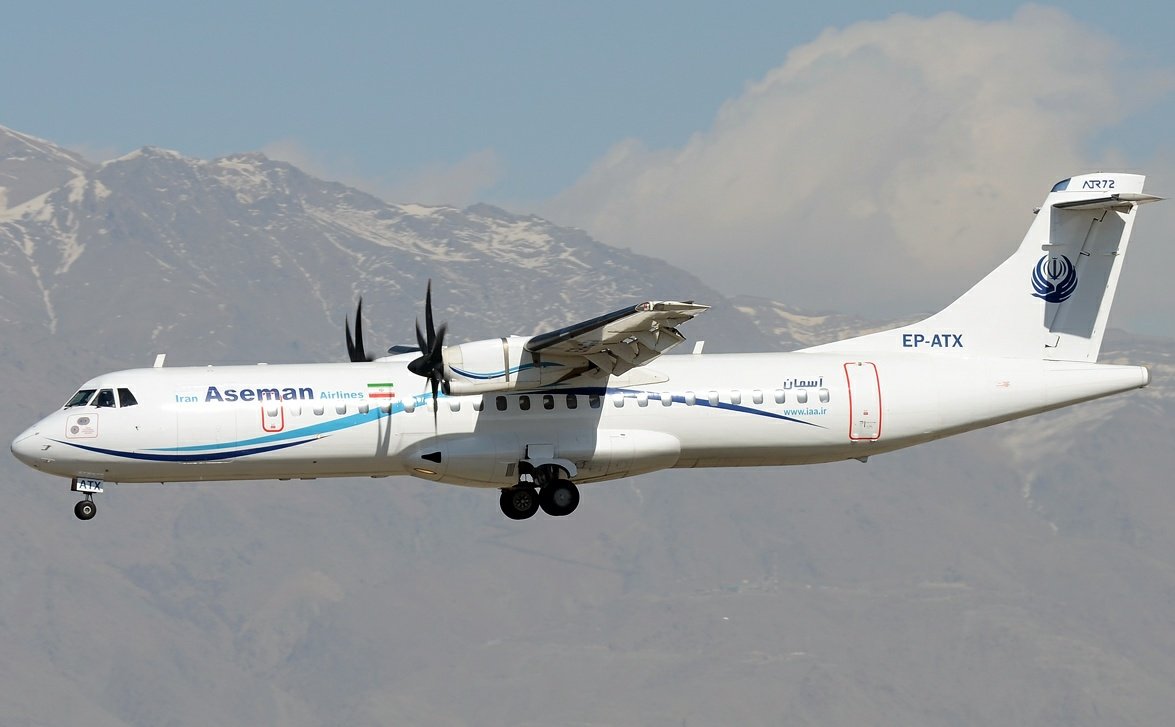Rescue teams have located the wreckage from an Iranian plane that crashed with 66 people on board on February 18 in Iran's central province, during the second day of searching.
“The wreckage of the ATR airplane flying from Tehran to Yasuj has been found near Dengezlu city, in Semirom county,” Iran’s state news agency IRNA quoted the deputy governor of Kohgiluyeh and Boyer-Ahmad Province Jafar Gohargani as saying on Monday.
On the morning of February 18, the ATR-72 twin-engine turboprop plane belonging to Asseman Airlines left Tehran and was heading towards the city of Yasuj, in the southwestern part of the country.
According to state media, the plane crashed about an hour after takeoff, roughly 22 km (14 mi) from Yasuj and close to the city of Semirom, which is located in the central province of Isfahan. Sixty passengers plus six crew members were reported to have been killed.
The head of the Red Crescent Society in Kohgiluyeh and Boyer-Ahmad Province, Amanollah Jahanbin, said that 45 teams along with 350 rescue members are working in the area to provide services. About 100 specialized mountaineer rescue workers, along with drones and helicopters, had been deployed as part of search and rescue operations. Bad weather was hampering search efforts, however, in what are mountainous regions within the Zagros range.
Aseman Airlines has dismissed the possibility of technical failure, pinning the blame solely on bad weather. However, local news media reported that the plane had technical problems in the past few weeks.
The ATR-72 plane, which had been in service for 25 years, was developed and produced in France and Italy. The head of Iran's Civil Aviation Organization public relations office Reza Jafarzadeh told IRNA on Monday that a seven-member delegation from France is to arrive in Tehran tonight to examine the reason behind the crash.
Aviation accidents are unfortunately not uncommon in Iran, due to its aging aircraft fleets, inability to acquire American-made spare parts due to sanctions, and what some say is a matter of mismanagement.
Following the 2015 nuclear deal with world powers, officially known as the Joint Comprehensive Plan of Action (JCPOA), that lifted international sanctions on Iran in exchange for curbs on its nuclear enrichment program, Tehran has been allowed to purchase airplanes and airplane parts from U.S. and European manufacturers, and already has made deals with Boeing and Airbus, for example, worth tens of billions of dollars.
The U.S. Treasury Department removed a final hurdle for western aircraft manufacturers to sell planes to Iran in September 2016, as it granted Airbus and Boeing the necessary licenses to deliver planes to Tehran. By December of that year, Iran Air signed a contract with Boeing for 80 planes: 50 of the narrow-bodied Boeing 737 passenger jets and 30 wide-body 777 aircraft.
A month later, the airline signed agreements to buy 118 planes from Airbus, before cutting the number to around 100.
Three Airbus jets had been delivered in 2017: one Airbus A321 and two Airbus A33. The first Boeing unit is due to arrive by May of this year, according to Iran’s English-language news outlet Press TV.
The French-Italian manufacturer ATR also has a deal with Iran’s flag carrier, Iran Air, for the delivery of 20 ATR 72-600 planes. Eight aircraft were delivered to Iran last year, and another 12 will be sent by the end of 2018.
In December, however, the Trump's administration was looking for ways to put an end to Iran acquiring U.S.-made commercial aircraft, and intended to block the planned sales. Months earlier, in September, the U.S. House of Representatives voted in favor of new measures that would block the sales of commercial aircraft to Iran, ignoring some lawmakers’ warnings that the new measures would undermine the JCPOA.
In February 2017, U.S. senators introduced the “Iran Terror-Free Skies Act,” legislation that would “counter Iran’s use of commercial aircraft in support of international terrorism and state sponsors of terrorism, or for other illicit military purposes,” according to a press release published on Senator Marco Rubio’s website.







 Azerbaijan and Armenia started the process of demarcation of their border on Tuesday, with the installation of the first border markers based on ge...
Azerbaijan and Armenia started the process of demarcation of their border on Tuesday, with the installation of the first border markers based on ge...
 President Aliyev emphasized the critical role of the North-South Transport Corridor in fostering transport cooperation between Azerbaijan and Russi...
President Aliyev emphasized the critical role of the North-South Transport Corridor in fostering transport cooperation between Azerbaijan and Russi...
 Armenian sappers commenced on Monday mine-clearance operations in the territories adjacent to the Saint Mary Church in village of Voskepar (Armenia...
Armenian sappers commenced on Monday mine-clearance operations in the territories adjacent to the Saint Mary Church in village of Voskepar (Armenia...
 Russian Foreign Minister Sergei Lavrov has reasserted that Moscow has no intentions to stop the fighting in Ukraine, even if peace talks commence.
Russian Foreign Minister Sergei Lavrov has reasserted that Moscow has no intentions to stop the fighting in Ukraine, even if peace talks commence.
 Iran and Pakistan have signed eight cooperation documents in various fields, and agreed to strengthen ties to fight terrorism in the region.
Iran and Pakistan have signed eight cooperation documents in various fields, and agreed to strengthen ties to fight terrorism in the region.



